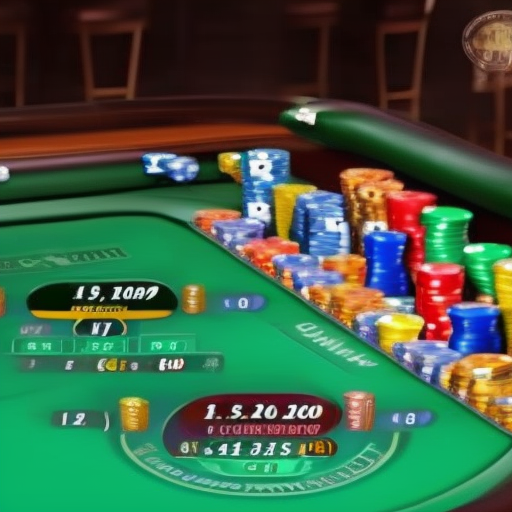Have you ever wondered what it would be like to know exactly how to calculate the odds of winning a game of poker? With mathematics, it’s entirely possible to do so, giving poker players the opportunity to take their game to a whole new level. In this article, we explore the maths of poker and how to calculate the odds of winning a hand.
Understanding the Maths
Mathematics often gets a bad rap for being a dry, boring subject that’s difficult to grasp. But in reality, maths is one of the most fascinating and practical subjects out there. What I love most about maths is that it’s all around us, from the patterns in nature to the algorithms that power our digital devices. Once we start to appreciate the beauty of maths, it becomes much more approachable and enjoyable.
Let’s take a look at some real-life examples of maths in action. Do you ever wonder how your phone knows the right time in different time zones? That’s all thanks to maths! And have you ever noticed how the petals on a flower are arranged in a spiral? That’s also a result of mathematical patterns. From cooking to shopping, maths plays a crucial role in our daily lives. So, let’s work together to understand the maths and unlock its incredible potential.
Factors in Poker Odds
When playing poker, calculating the odds of winning can give players an edge over their opponents. But how do you calculate these odds, and what factors affect them?
One key factor is the number of outs, or cards that will improve your hand. Let’s say you have a pair of kings, and there are three diamonds on the board. If you have two other diamonds in your hand, there are nine diamonds left in the deck that could give you a flush. This means you have nine outs, and according to the rule of four and two, you have roughly a 36% chance of hitting the flush on the turn or river. However, if your opponent has a flush draw too, their outs will affect your chances, as there are less cards left in the deck for your flush to come in. Consider what outs are available to both you and your opponents, and adjust your odds accordingly.
Another factor to keep in mind is pot odds. This refers to the ratio of the amount of money in the pot to the amount you need to call to stay in the hand. If the pot is $100 and your opponent bets $20, you need to pay $20 to win $120. This means the pot odds are 6:1. If your odds of hitting your hand are better than 6:1, it’s a profitable move to call their bet. However, if your odds are worse than 6:1, it’s better to fold. Keep an eye on the pot and the bets being made, and weigh up the potential winnings against the cost of playing.
Calculating Odds
Let’s say you’re heading to the casino and you want to know your chances of winning big at the roulette table. You’ll need to calculate the odds of the ball landing on a specific number or color. The good news is, is easier than you might think!
First, let’s define what odds are. Odds are a way of expressing the probability of an event occurring. They are the ratio of the number of ways an event can happen to the number of ways it cannot happen. For example, if you’re betting on a roulette wheel with 38 pockets, and you want to bet on the number 17, there is only one way for you to win, but 37 ways to lose. This gives you odds of 37:1 against winning. With a small bet on the number 17, the potential payout can be huge if you’re lucky enough to hit it! Don’t forget to have fun and enjoy the thrill of playing, but always gamble responsibly!
Strategy and Application
Consider a scenario where you’ve just started your own business. You have a great product or service, but you’re struggling to get sales. So what do you do? Developing a strategy is essential. Without it, you’re simply taking shots in the dark. Start by analyzing your target audience. Who are they? What is their age group? What is their profession? Once you’ve determined your target audience, you need to figure out what they want, and how your product or service fulfills that need. Knowing this will help you develop a marketing strategy that is tailored to your audience’s specific needs.
Now it’s time to apply your strategy. This is where the rubber hits the road. Here are a few practical things you can do to apply your strategy effectively:
- Focus on your Unique Selling Proposition (USP) and make it clear in all your marketing efforts.
- Use social media platforms to reach a wider audience.
- Create content that is valuable to your target audience.
- Partner with other businesses or influencers in your industry to gain better visibility.
By understanding your target audience and knowing how to apply your strategy, you’ll be well on your way to success. Remember, developing a strategy takes time and patience, but the payoff is worth it. Understand the mathematics of poker and you will help to increase your probability of taking home the pot. Put the odds in your favor – calculate the odds of poker and use it to your benefit. With the proper application of mathematics, you now know that the real game of poker is not about luck, but about knowing the numbers.